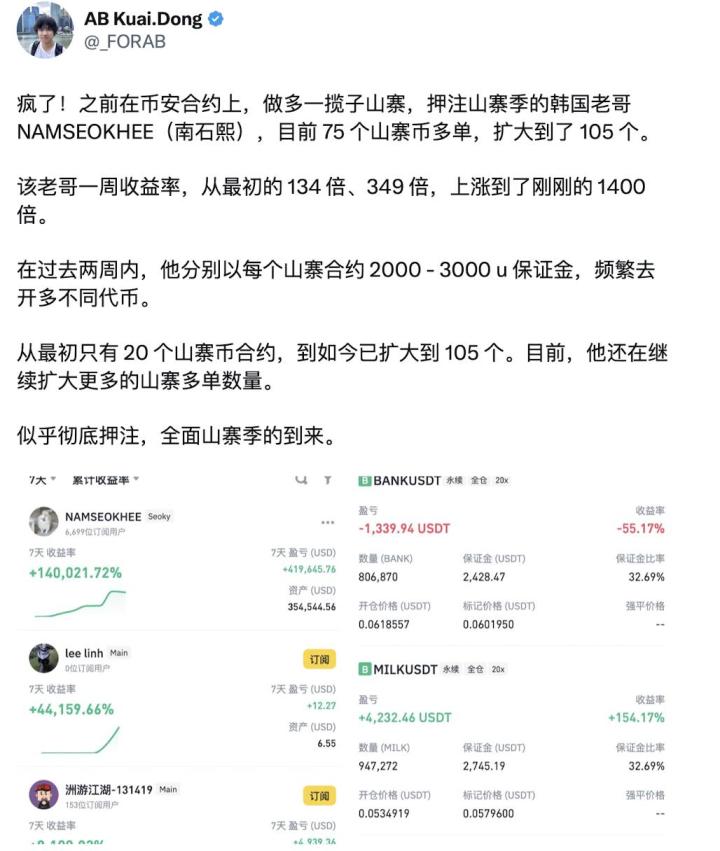Bitcoin (BTC) once again has excited the cryptocurrency community by surpassing the 111,000 USD mark, establishing a new all-time high. However, this price increase seems significantly different from previous cycles.
Based on market indicators and on-chain data, there are three notable differences compared to previous Bitcoin peaks. These differences suggest a more mature and less speculative market. Let's examine the details.
#1. Low Funding Rate: Futures Market Shows Less Overheating
An important indicator of an overheated market is the funding rate in the perpetual futures market. This rate reflects the cost traders must pay to maintain long or short positions and reveals the overall market sentiment.
According to data from CryptoQuant, when Bitcoin reached its peak in March and December 2024, the funding rate surged. This signaled over-leveraged long positions and an overheated market. Such conditions typically lead to significant price corrections afterward.
 Bitcoin Funding Rate. Source: CryptoQuant.
Bitcoin Funding Rate. Source: CryptoQuant.However, in May 2025, despite increasing long positions, the funding rate remains significantly lower than previous peaks. This indicates that the current price increase is less driven by excessive speculation in the futures market.
"Compared to March and December of last year, the current perp funding rate is much lower than before. This means the recent price increase is driven by the spot market and is less overheated. The likelihood of a strong correction is low," Nic, CEO and Co-founder of Coin Bureau, said.
This stability is a positive sign. It suggests the market is developing in a more sustainable direction.
#2. Weaker ETF Inflows: Where is the Buying Pressure Coming From?
In previous price increases—especially in March and December 2024—US spot Bitcoin ETFs played a crucial role in pushing prices higher. Data from Glassnode shows these ETFs recorded billions of dollars in inflows during those periods.
However, ETF inflows have been relatively modest in the new peak in May 2025.
 US Spot Bitcoin ETF Net Flows. Source: Glassnode.
US Spot Bitcoin ETF Net Flows. Source: Glassnode.A recent report from BeInCrypto indicates that spot Bitcoin ETFs saw inflows of 608.99 million USD, marking six consecutive days of increased investor confidence.
Glassnode's chart shows that while Bitcoin's price rose from 70,000 USD to over 100,000 USD recently, ETF inflows remain much lower than previous peaks. According to Nic, this means ETF investors—both retail and institutional—are not the primary driver of the current price increase.
"Recent ETF flows are less exciting compared to previous all-time high breakouts. This means ETF buyers (retail & institutional investors) are not the biggest contributors to this price increase," Nic added.
This raises the question: If not ETFs, who is buying Bitcoin?
Some speculate that large companies like MicroStrategy (MSTR) or other funds may be quietly accumulating BTC. However, detailed data remains unclear. This allows for potential for greater price increases if institutional investors return to the market more strongly.
#3. Absent Retail Investors, Social Metrics at Record Lows
Another significant difference in this cycle is the absence of retail investors.
In previous bull markets, each Bitcoin peak was accompanied by increased public interest. This was reflected in high social interaction metrics. But this time, social metrics related to Bitcoin are at record lows.
 Bitcoin Price and Historical Social Metric. Source: Into The Cryptoverse.
Bitcoin Price and Historical Social Metric. Source: Into The Cryptoverse.Specifically, Google searches for "Bitcoin" in May 2025 barely increased compared to previous peak periods. This suggests retail investors have not yet entered the market in large numbers.
Additionally, data from CryptoQuant shows the number of wallet addresses classified as "shrimp" (holding less than 1 BTC) has dropped to its lowest level since 2021.
The lack of retail investor activity could be a positive sign. It suggests the current price increase is not driven by FOMO (fear of missing out), a factor that often causes bubbles and crashes. Instead, natural demand from long-term investors seems to play a crucial role.
All these factors indicate a more mature market with potential for sustainable growth.
Can Bitcoin reach 120,000 USD as many analysts predict? Only time will tell. But currently, this is a cycle worth watching closely.







